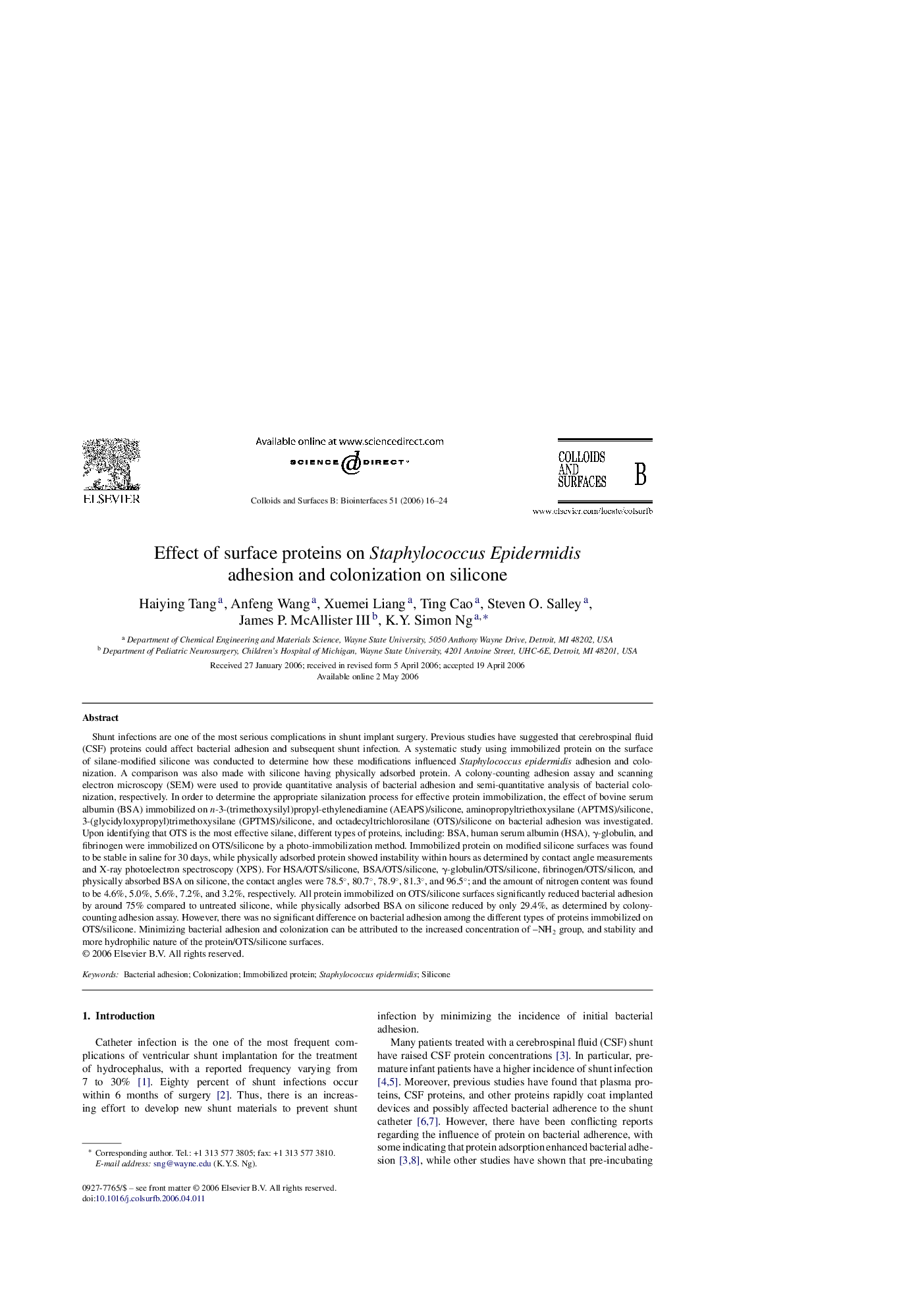| Article ID | Journal | Published Year | Pages | File Type |
|---|---|---|---|---|
| 603042 | Colloids and Surfaces B: Biointerfaces | 2006 | 9 Pages |
Shunt infections are one of the most serious complications in shunt implant surgery. Previous studies have suggested that cerebrospinal fluid (CSF) proteins could affect bacterial adhesion and subsequent shunt infection. A systematic study using immobilized protein on the surface of silane-modified silicone was conducted to determine how these modifications influenced Staphylococcus epidermidis adhesion and colonization. A comparison was also made with silicone having physically adsorbed protein. A colony-counting adhesion assay and scanning electron microscopy (SEM) were used to provide quantitative analysis of bacterial adhesion and semi-quantitative analysis of bacterial colonization, respectively. In order to determine the appropriate silanization process for effective protein immobilization, the effect of bovine serum albumin (BSA) immobilized on n-3-(trimethoxysilyl)propyl-ethylenediamine (AEAPS)/silicone, aminopropyltriethoxysilane (APTMS)/silicone, 3-(glycidyloxypropyl)trimethoxysilane (GPTMS)/silicone, and octadecyltrichlorosilane (OTS)/silicone on bacterial adhesion was investigated. Upon identifying that OTS is the most effective silane, different types of proteins, including: BSA, human serum albumin (HSA), γ-globulin, and fibrinogen were immobilized on OTS/silicone by a photo-immobilization method. Immobilized protein on modified silicone surfaces was found to be stable in saline for 30 days, while physically adsorbed protein showed instability within hours as determined by contact angle measurements and X-ray photoelectron spectroscopy (XPS). For HSA/OTS/silicone, BSA/OTS/silicone, γ-globulin/OTS/silicone, fibrinogen/OTS/silicon, and physically absorbed BSA on silicone, the contact angles were 78.5°, 80.7°, 78.9°, 81.3°, and 96.5°; and the amount of nitrogen content was found to be 4.6%, 5.0%, 5.6%, 7.2%, and 3.2%, respectively. All protein immobilized on OTS/silicone surfaces significantly reduced bacterial adhesion by around 75% compared to untreated silicone, while physically adsorbed BSA on silicone reduced by only 29.4%, as determined by colony-counting adhesion assay. However, there was no significant difference on bacterial adhesion among the different types of proteins immobilized on OTS/silicone. Minimizing bacterial adhesion and colonization can be attributed to the increased concentration of –NH2 group, and stability and more hydrophilic nature of the protein/OTS/silicone surfaces.
